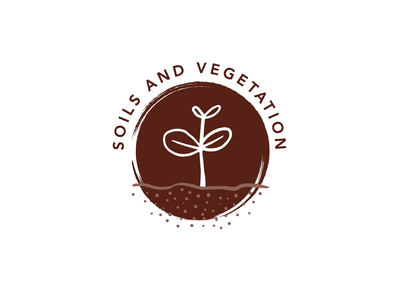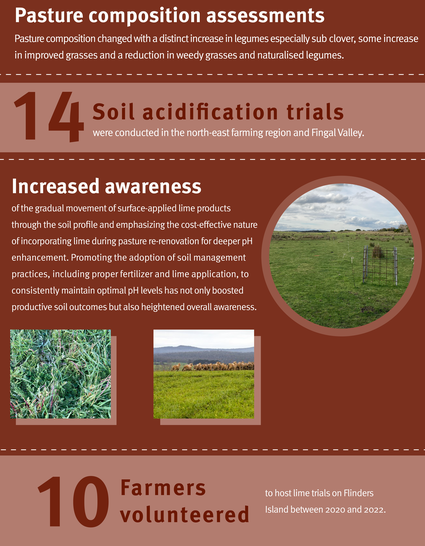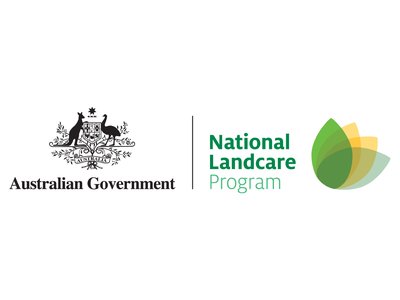Soil Acidification Project
The aim of the Soil Acidification Project was to increase awareness of soil acidification and its effect on productivity and to promote practices to ameliorate and reduce the likelihood of soil acidification. The project concluded in June 2023.
Focus
Focus
The Soil Acidification Project focused on increasing the knowledge of graziers in the Waterhouse/Tomahawk and Fingal farming areas about soil acidification in agriculture. Among the key objectives was the adoption of improved practices through on-farm demonstrations, as well as recommendations for adaptive management and expansion of the program in future years. Soil acidification trials aimed to determine if superfine lime products work better than regular lime products to address subsoil acidity when surface-applied on pasture.
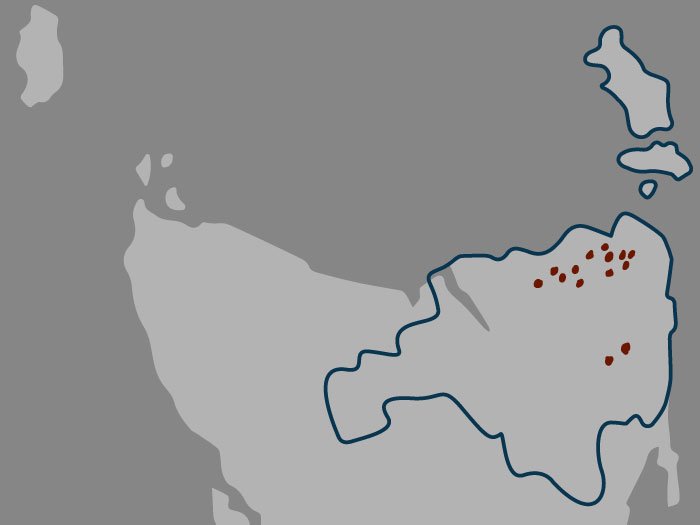
Soil acidification trial sites are set up throughout northern Tasmania.
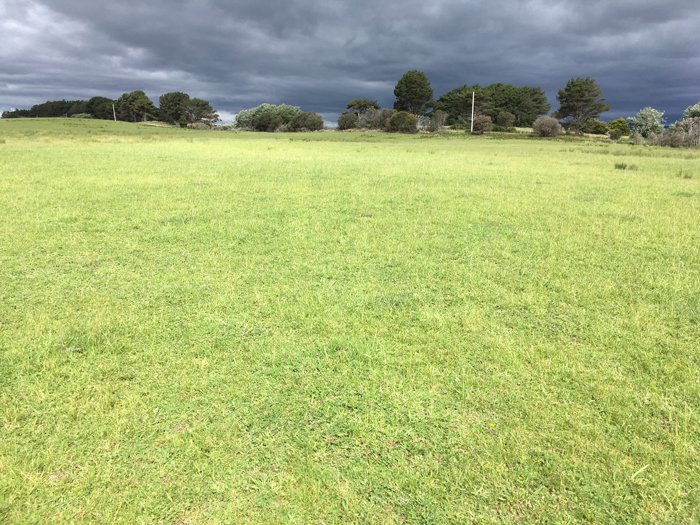
Pasture cover at one of the trial sites prior to application.
Value
Value
Managing soil acidity in Tasmanian permanent pasture systems is challenging due to a shallow (10cm) soil testing depth and low neutralising value of commonly used lime. Low soil pH in agricultural systems leads to a range of issues, including aluminium toxicity, lockup of certain minerals, and impaired performance of soil biological function, such as legumes that fail to form effective rhizobia symbiosis. These issues lead to poor performance, particularly in shallow-rooted pastures with low resilience in dry seasons.
Achievements
- - - - - - - - - - - - - - - - - - -
Partners
This project is supported by NRM North, through funding from the Australian Government’s National Landcare Program.
Partners
This project was supported by NRM North, through funding from the Australian Government’s National Landcare Program.
